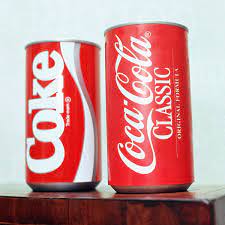Reverse Branding – Going Forward

Reverse Branding inverts the traditional branding process by starting with the category and moving backwards to accommodate the brand.
The concept of “reverse branding” might seem novel to some. Branding is a process that involves establishing a relationship between a product or service and its target audience. Consider Prestige (pressure cookers) and the word “safety” that has come to be associated with it. Instead of beginning with the brand and working backwards to fit the category, Reverse Branding flips the process around. Examples: ‘adventure gear’ and Wildcraft.
Traditional branding initiatives are failing to connect with today’s savvy customers. As there are already so many brands competing for consumers’ attention, Reverse Branding is the method to go further. The growing number of conscientious shoppers who want to have a good impact on the planet are favouring businesses that do just that. The significance of Reverse Branding increases in light of this.
This can be attributed to the fact that we search for a general solution and then get narrowed down on a brand after that. Since people are always looking for endorsements or recommendations
If you’re having trouble pinpointing the specifics of a problem, try breaking it down into more manageable tasks.
- Aim for an emotional connection with your customers by thinking of unique methods to communicate with them. It may seem like a lot of work and extra time and effort is needed, but the results will be well worth it. When you succeed in doing so, you’ll get not just the regular devotion of your customers, but also a dedicated following of brand supporters.
- People nowadays are more inclined to support brands that connect with a good purpose. The majority of modern customers are millennials, and they place a premium on supporting companies that act in a socially responsible manner. For a long time, consumers have associated FabIndia and Body Shop with social good.
- Tell a narrative with your product; people love a good tale. Company jargon and meaningless catchphrases have no appeal to them. For your business to connect with customers today, especially millennials, it needs to tell a story they can believe in and relate to. Nike is aware of this fact and has been capitalising on the influence of compelling narratives for far longer than the rest. There’s a narrative behind almost everything Nike does, and the company doesn’t simply convey those tales; it also provides individuals with a powerful platform to share theirs.
- Consumers place the most trust in the advice of their friends and family members. Nearly 97% of brand purchases are influenced by what friends say, while only 10% are influenced by traditional advertising.
- Choose the most appropriate communication methods. To communicate effectively with your target audience, you must first have an in-depth knowledge of them. This includes learning how and why they prefer to receive information. If you take the time to look at this data, you can figure out how to reach your target audience with your most important message and through which channels.
Overall, it’s safe to say that very few people’s first considerations of a brand include the brand itself. They figure out what they want and then choose somebody they think can provide it to them. To be successful as a brand, you need to make sure your target audience likes you. You might say that this is the crux of what Reverse Branding is all about.
References
https://www.marketingprofs.com/short-articles/155/moving-forward-with-reverse-branding



